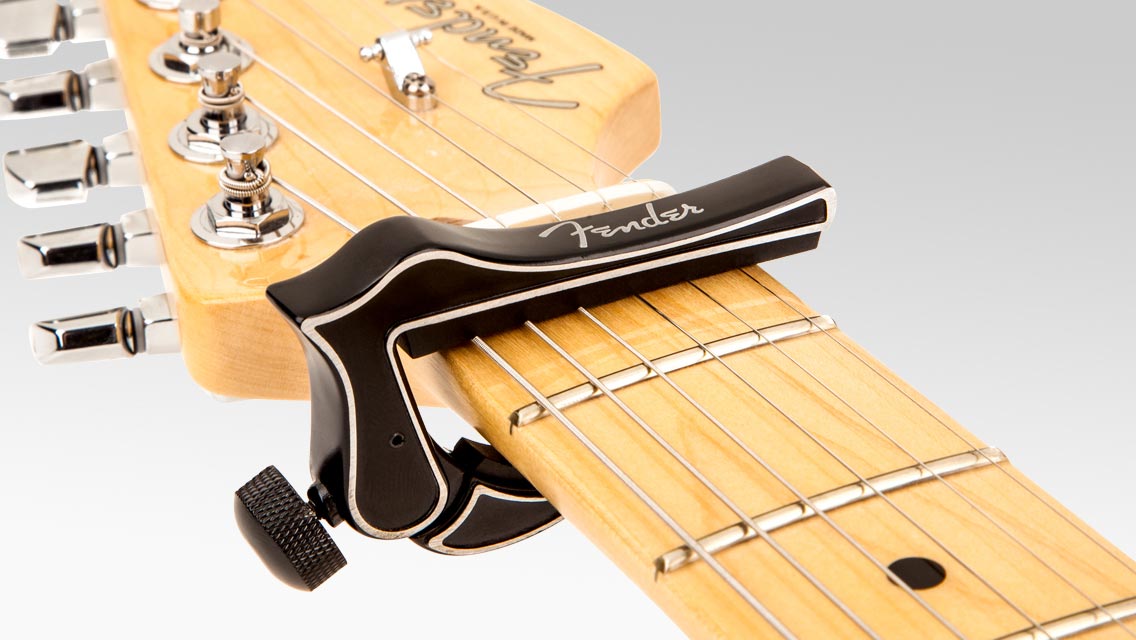By Jeff Owens
Be in the Moment: The Presence Control Explained
What is it and how can it help energize your live sound?

One of the most confusing controls that has appeared on Fender amplifiers over the years is the "presence" control.
What does it do? Well, it controls “presence", which boosts upper-mid and treble frequencies in a specific manner that makes the tone sound notably livelier; a little “wilder” than normal. The quality of this livelier, wilder tone is typically described as being more “present,” thus the name.
Saying that the upper-mid and treble frequencies become more present doesn’t exactly mean they become “louder” in the sense that an amp’s volume control affects all frequencies evenly. Nor does the presence control affect the tone in the same manner as the amp’s “mid” and “treble” tone controls.
To explain what a presence control does in greater detail, let us note a fundamental basic of amplifier design. Namely, that an amp consists of at least two “sections”—a preamp stage and a power amp stage. The preamp stage comes first and is where most of the tone shaping happens; the power amp stage comes second and provides the muscle that blasts your sound out into the world and makes the neighbors call the cops.
Your amp’s traditional tone controls—“bass,” “mid” and “treble”—reside in the preamp stage and thus accomplish their work before the signal reaches the power amp. These tone controls are generally “subtractive”—that is, they don’t boost anything; they control the amount of frequency band removed from the signal.
The presence control, on the other hand, resides in the power amp stage. Technically, it’s a “high frequency shelving boost” control, which is much like the treble control on a traditional stereo. Turning it up actually does boost part of the frequency band.
Here’s where things get a little complicated, but hang in there with us. Because of the nature of power amp design and function (specifically power amp feedback, the science of which fills volumes if not entire libraries) the presence control affects upper-mid and high frequencies in a completely different way that than the normal tone controls found in the preamp stage.
Increasing the presence control decreases high-frequency-only feedback in the power amp, which makes the amp distort more easily for higher notes. Also, it decreases the amp’s ability to precisely control the actual speaker cone at high frequencies—this is what makes the amp sound wilder and raspier in a way that the treble control knob isn’t capable of.
When playing an amp cleanly, increasing the presence control simply results in more upper midrange and treble.
When pushing an amp into distortion, though, the presence control behaves differently. It changes the “texture” of the distortion and adds complexity to the sound, making the amp feel a little “less predictable” for higher notes.
As you can see then, the function of the presence control varies with volume. The louder you play, the more it does and the more noticeable it becomes.
Presence controls were found on several notable Fender “tweed” amps of the 1950s. As of fall 2014, Fender amps equipped with a presence control include the ’59 Bassman LTD, ’57 Band-Master, Blues Deluxe Reissue, Hot Rod DeVille 212 III, 410 III and ML 212, Hot Rod Deluxe III, Blues Deluxe Reissue, and GB Hot Rod Deluxe.
Don’t miss out!
Be the first to know about new products, featured content, exclusive offers and giveaways.


